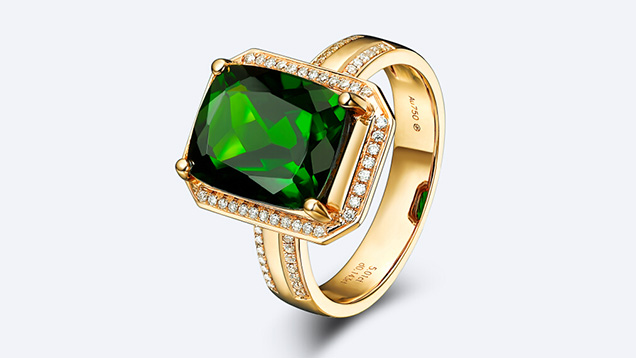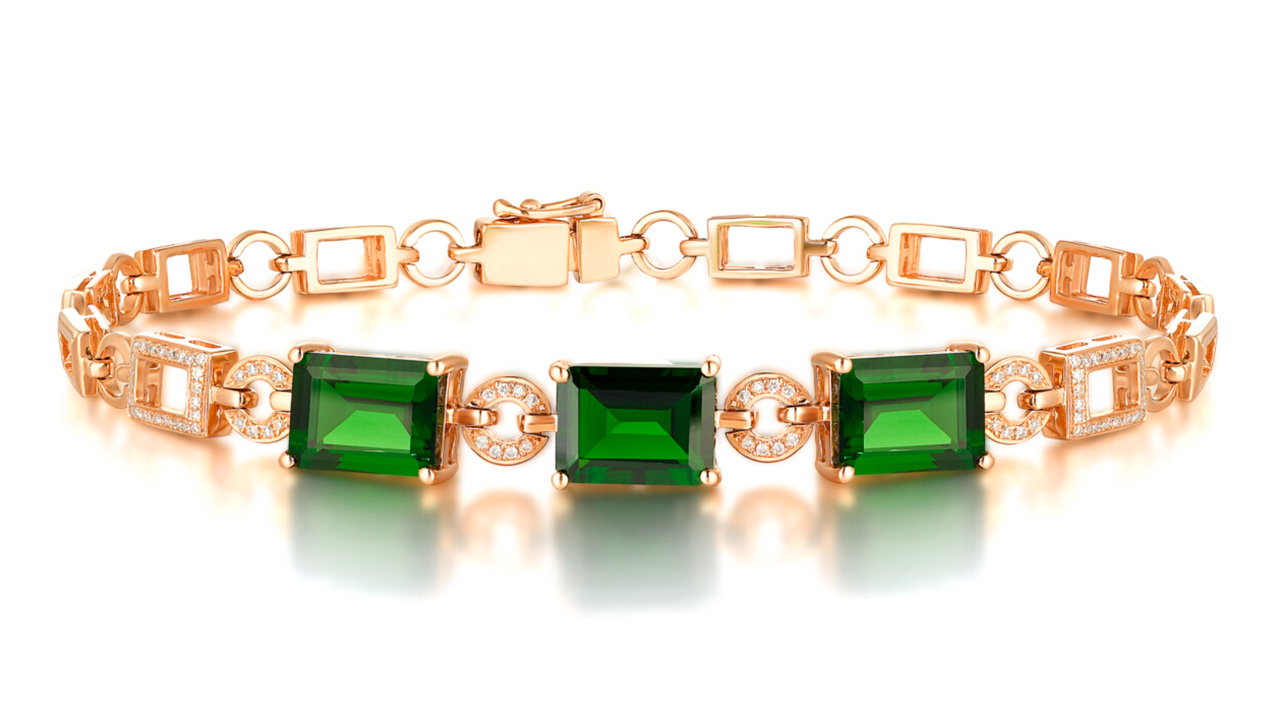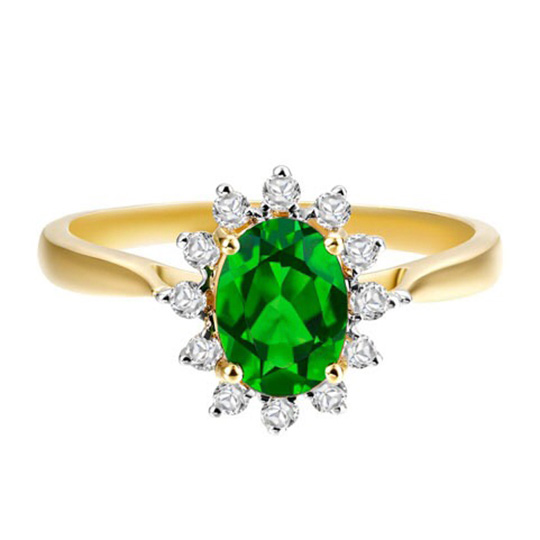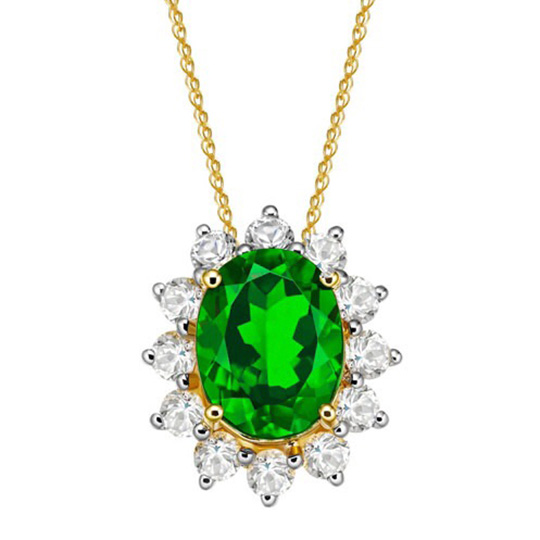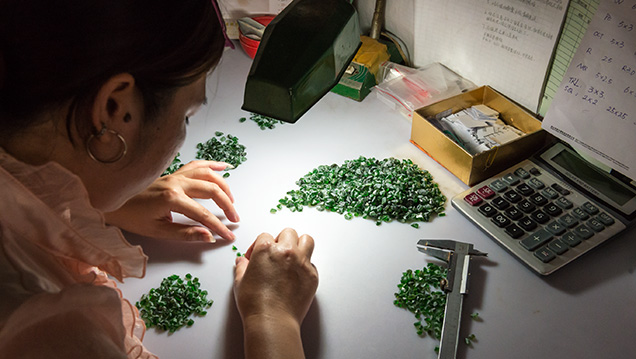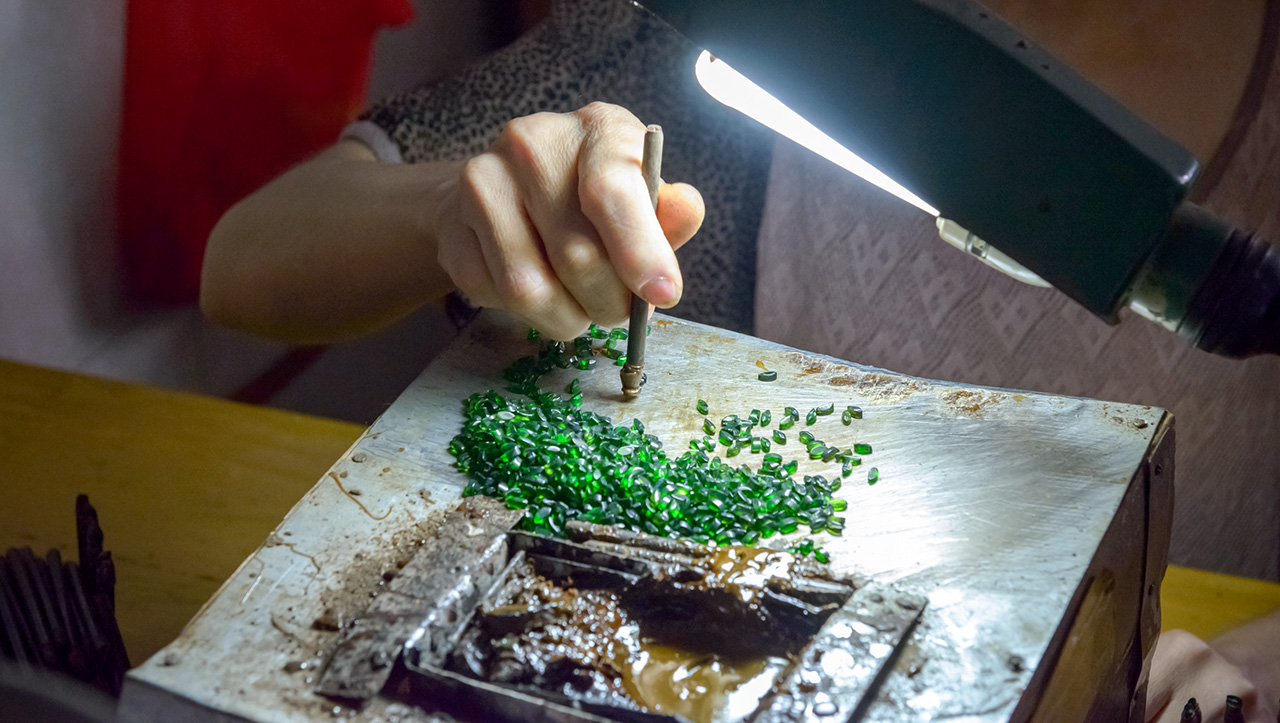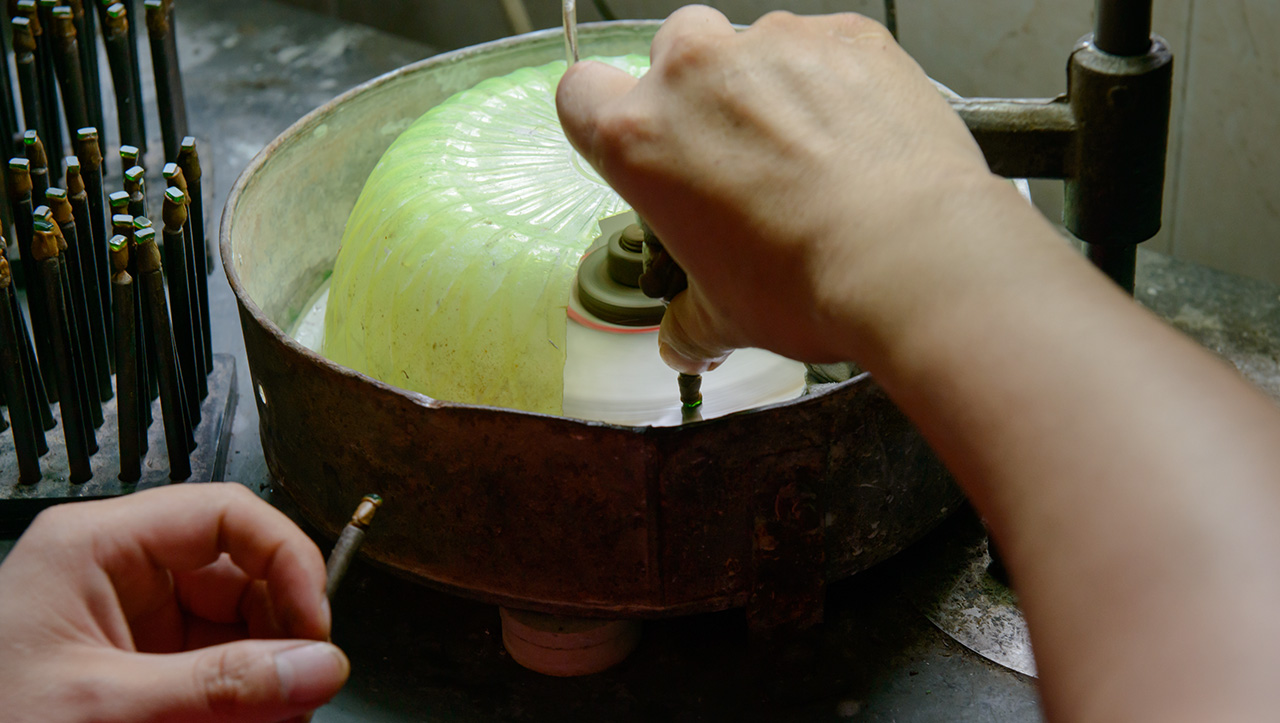The Great Potential of Diopside in the China Market
June 19, 2015
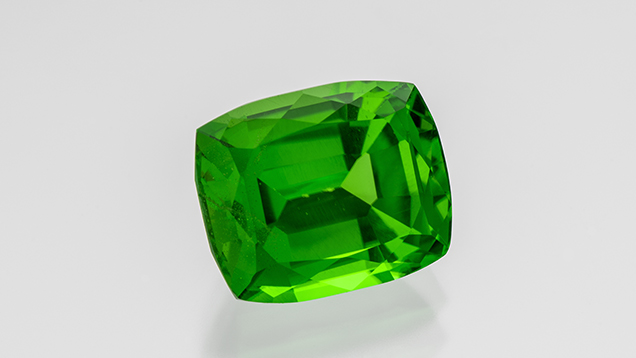
Most of the diopside on the market is in readily available commercial sizes, ranging from approximately one half to two carats. However, larger stones can be found, some over five carats. Though Russia is the primary source of gem-quality chrome diopside, deposits also exist in Pakistan, Afghanistan, Italy, Finland, Austria, Tanzania, Madagascar, Myanmar (Burma), and India.
Once mainly described as an emerald alternative, chrome diopside is increasingly being promoted as a gem in its own right. Some domestically and internationally well-known jewelry brands such as Sino Jewel and Enzo have been promoting diopside jewelry since 2013.
Sino Jewel was established in the early 1990s in Shenzhen. It now operates as a group of companies handling jewelry design, manufacturing, wholesaling, and haute couture services. In 2012, Sino Jewel was named by the China General Chamber of Commerce as “China’s No. 1 Colored Stone Jewelry Brand.” In the spring of 2015, Sino Jewel launched a jewelry series called “Crispy Green,” featuring both faceted and cabochon-cut diopside in 18K gold jewelry. The brand also now offers promotional assistance to the trade, providing guidance and display services to retail stores and diopside distributors.
Faceting
Owners of gem-cutting businesses in Shenzhen and Panyu informed the authors that due to diopside’s low hardness (Mohs 5.5) and flat crystal shape, only more experienced gem cutters can handle its processing, and the weight yield is generally low. Diopside is currently one of their main working materials, with faceted stones exported mostly to Hong Kong, Thailand, and the US. They are also witnessing higher domestic demand from well-known jewelry brands. In 2013, when the authors visited the colored stone cutting factory of Hutang Gems & Jewelry Ltd. in Panyu, their main goods were diopside and peridot. The factory also manufactures jewelry mounted with these two stones.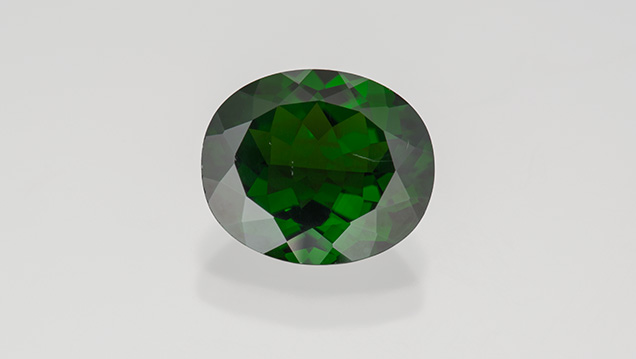
Sourcing
Gem-quality chrome diopside is mined primarily in eastern Siberia. The so-called Inagli deposit is located in the republic of Sakha. Many Chinese stone cutters, including Mr. Wu, travel to the mines to buy diopside rough. He went to the mine in 2014 and brought pieces of rough from that location to the 2015 Tucson Gem Show. He described the harsh weather and terrain conditions in the mining area that shorten the mining season to only the summer months. This leads to limited supplies and steadily increasing prices.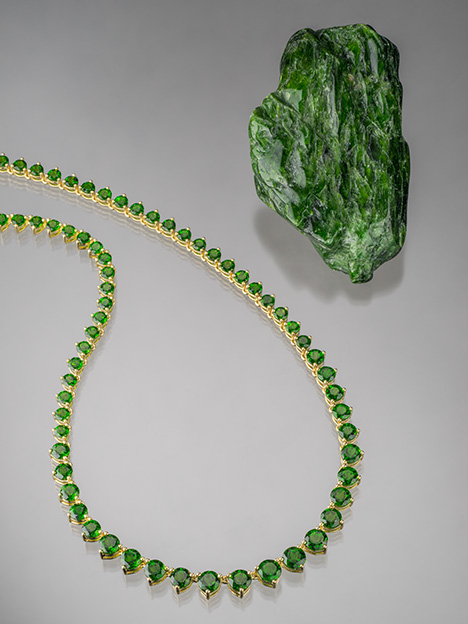
925 silver. The accompanying piece of rough weighs 105.9 grams. It was brought from
Siberia, Russia, by Mr.Wu, Hutang’s president. Photo by Robert Weldon, courtesy of
Hutang Gems and Jewelry Ltd.
Summary
As consumers become more aware of chrome diopside, the gem is gradually making its way into the mainstream jewelry market in China. In addition to its attractive color and comparatively affordable price, the stories of exotic sourcing and the gem’s untreated nature are both great diopside selling points. Modern Chinese consumers are more accepting of new stones than ever before. Chrome diopside already has great potential, and it is highly possible that its niche in the rapidly developing Chinese market will grow.Dr. Tao Hsu is Technical Editor of Gems & Gemology. Andrew Lucas is Manager of Field Gemology for Content Strategy at GIA in Carlsbad.
The authors would like to thank ex-ICA president Mr. Wilson Yun for introducing us to industry leaders in Guangdong, China. We also gratefully acknowledge the help provided by Mr. Jianpin Wu, the president of Hutang Gems & jewelry Ltd. Special thanks go to China Gems magazine, Sino Jewel, and Enzo for providing us with jewelry photos.
DISCLAIMER
GIA staff often visit mines, manufacturers, retailers and others in the gem and jewelry industry for research purposes and to gain insight into the marketplace. GIA appreciates the access and information provided during these visits. These visits and any resulting articles or publications should not be taken or used as an endorsement.
